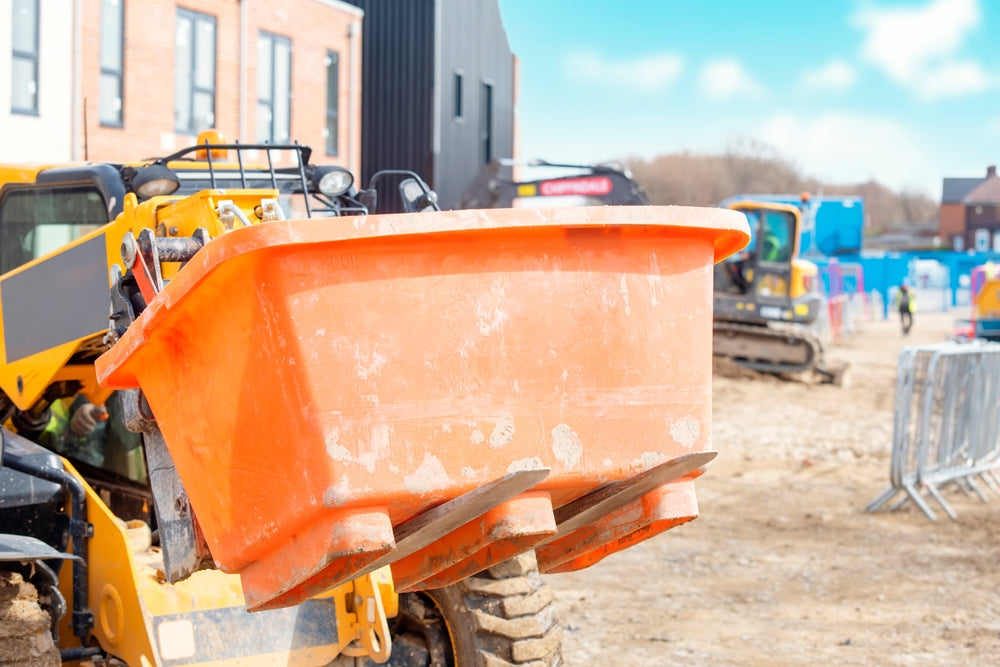
Common Mistakes to Avoid When Using Forklift Skips
Attention forklift operators and site managers: Improper use of forklift skips can lead to serious accidents, equipment damage, and reduced efficiency.
Ensuring that staff know common mistakes to avoid when using a forklift skip is imperative to avoiding workplace accidents.
Common mistakes include overloading skips, uneven load distribution, skipping regular maintenance, and neglecting to secure skips properly.
Here, we examine these common mistakes when using forklift skips and offer practical solutions to maintaining workplace safety and efficiency.
Common Uses of Forklift Skips
Forklift skips are primarily used for:
- Waste Handling: Efficiently transporting and disposing of scrap, waste, and debris.
- Material Transport: Moving bulk materials, such as sand, gravel, and construction materials.
- Recycling Operations: Handling recyclable materials and segregating different types of waste.
Common Mistakes When Using Forklift Skips
When you understand common mistakes that can be made when using forklift skips, it can help you create a safer and more efficient work environment.
Here’s what to know and avoid:
Overloading the Skip
Overloading is one of the most common mistakes. Forklift skips are designed to hold specific weight limits, so when you exceed the limit and put too much waste inside, it can lead to tip-overs structural damage to the skip, and sometimes the forklift won’t be able to lift the skip.
How to avoid overloading
Always check the skip’s maximum weight capacity, which can typically be found on the skip. Operators should be trained to estimate loads correctly, and in some cases, you may need to use scales to stop overloading from happening.
Improper Load Distribution
You want to avoid unevenly loading the skip. If you put too much weight on one side, it will affect the balance of both the skip and the forklift, which can lead to accidents.
An imbalance of a forklift skips results in the forklift tipping over, especially when it is being moved over uneven ground.
Best practices for balanced loading
Ensure that heavy materials are evenly distributed across the skip. Keep the centre of gravity low and balanced. Those using the skip should be trained to load evenly to maintain stability.
Skipping Regular Inspections and Maintenance
Neglecting regular inspections and maintenance is a recipe for disaster. Over time, skips can suffer from wear and tear, which may lead to failures during use.
Create maintenance schedules
Implement a routine check procedure that includes visual inspections for cracks, bends, or damage. Create a checklist that covers all parts of the skip, including hinges, locking mechanisms, and structural integrity.
Failing to Secure the Skip Properly
If you don’t secure the skip properly, it can slide off the forklift during transport, leading to spills, accidents, or injuries. Ensuring that the skip is attached correctly is crucial.
Securing the skip
Before transporting, ensure the skip is securely attached to the forklift’s carriage. Use safety chains and locks where necessary, and double-check attachments before moving.
Using Damaged Skips
Using damaged skips can lead to catastrophic failures during operation. Cracks, rust, and weakened structures compromise the skip's integrity.
Guidelines for replacement
Establish a strict protocol for inspecting skips before every use. If any damage is detected, remove the skip from service immediately and arrange for repairs or replacement.
Ignoring Forklift Operator Training
Forklift operators must be adequately trained in handling skips, as it requires different skills than standard pallet handling.
Training Programs and Refreshers
Schedule training sessions and refreshers for operators regularly. Cover topics such as loading techniques, securing skips, and adhering to safety guidelines.
Neglecting to Follow Site-Specific Safety Protocols
Every site has its own specific rules and safety protocols. Ignoring these protocols can result in accidents, fines, or legal consequences.
Creating Site-Specific Guidelines
Develop site-specific safety manuals that include rules for using forklift skips. Regularly review and update these guidelines to match the current safety standards.
Using forklift skips effectively requires a solid understanding of their proper handling and the common mistakes to avoid. From overloading to skipping inspections, every error can have serious consequences. By staying vigilant, adhering to safety protocols, and investing in proper training, you can ensure a safe and efficient working environment.
